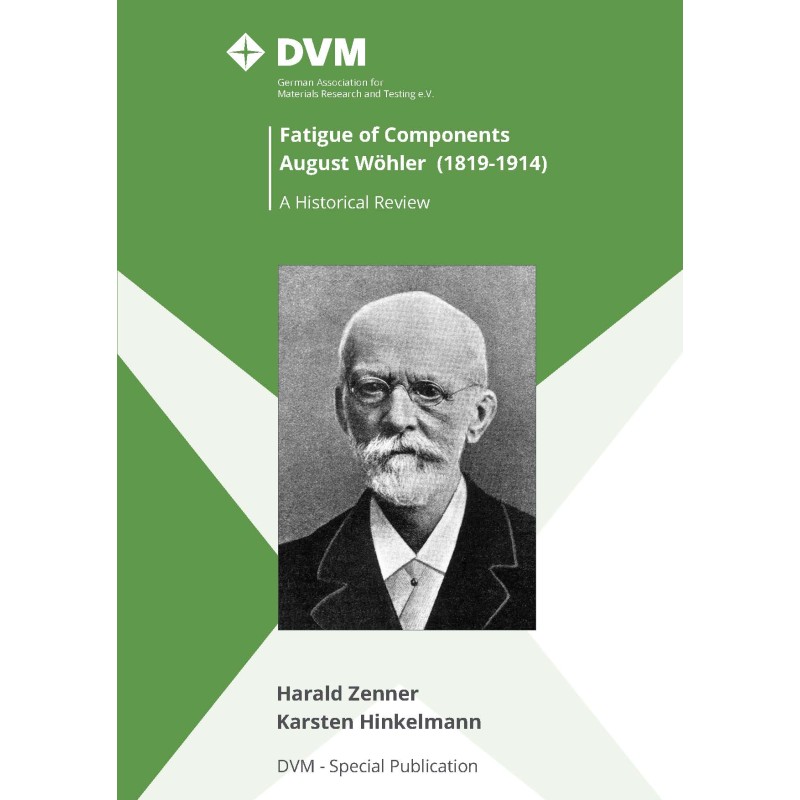




DVM-Sonderheftreihe

Datenschutzbedingungen (bearbeiten im Modul "Kundenvorteile")

Lieferbedingungen (bearbeiten im Modul "Kundenvorteile")

Rücksendebedingungen (bearbeiten im Modul "Kundenvorteile")
August Wöhler was an interesting and unique character, influenced by the 19th century industrial revolution, especially railway development. The spread of this new technology caused numerous problems. Fractures arose on axles, wheels and rails at stresses below the component’s static fracture strength. There was no scientific explanation for this. August Wöhler was able to prove by systematic tests that repeated, thus dynamic stresses far below the static strength may lead to fracture. The present article gives a brief overview of Wöhler's biography and his achievements.
In the field of technology, good biographies are relatively rare. Except for those written by individuals referring to personal acquaintance, most facts get lost. For A. Wöhler, there are two very authentic biographies. The first biography was published in 1914, the year of August Wöhler’s death. It is by L. Troske, a former employee of A. Wöhler. The second biography was published in 1918 by Wöhler’s grandson R. Blaum. A short overview about Wöhler´s curriculum vitae with important life stages will be given.
Wöhler´s famous experimental works date back even longer to the middle of the 19th century. His fatigue tests running over a time of fourteen years had led to five publications between 1858 and 1870. Wöhler, to be sure, was not the first who carried out fatigue tests. But he is internationally regarded as the first who studied parameters of dynamic strength methodically.
The five presented publications of Wöhler are dealing with amongst other things:
Wöhler had to invent his testing machines by himself and set a precedent thereby. He is considering not only the endurance limit but also constructions for a limited number of cycles in use.
His experimental studies meant a lot to August Wöhler. But also very important for him was the reliable strength dimensioning by an exact determination of the permissible stress, a classification of materials (iron and steel) regarding rather characteristic properties than application and the constitution of independent testing institutions, the institutes for materials research and testing.
Both his achievements as well as criticism are presented. For example A. Wöhler did not graph his own results. This has only been done by his successor L. Spangenberg in a linearly scale. The double logarithmic plot was not used before 1910 by O. H. Basquin. Furthermore there is no single passage drawing a comparison between the fracture surfaces in the test and those in operation. All this cannot diminish its achievements. Walter Schütz summarizes in his “History of Fatigue”: In summary one can only admire the work of Wöhler in its entirety, encompassing the measurement of service loads, the calculation of the corresponding service stresses, the design for finite life including scatter (probability of survival) up to the observation of crack propagation and the quantitative suggestions for the decrease of the notch effect.
Readers who are interested in these topics might be pleased as DVM German Association for Materials Research and Testing will publish a historical special issue in 2017:
Fatigue of Components
August Wöhler (1819 - 1914) - A Historical Review